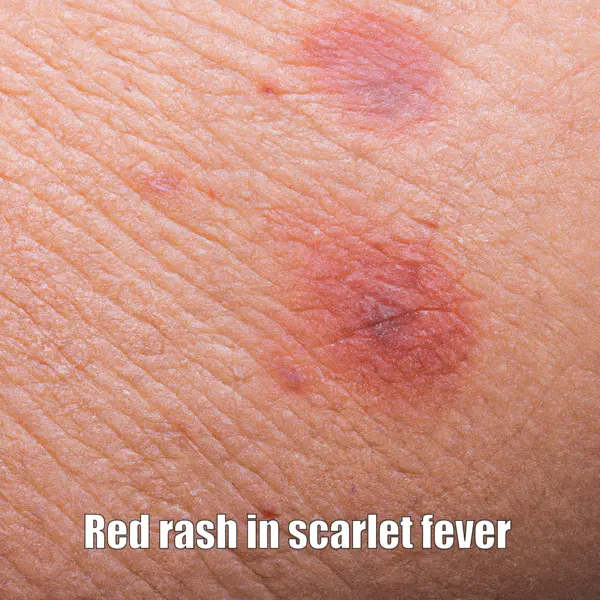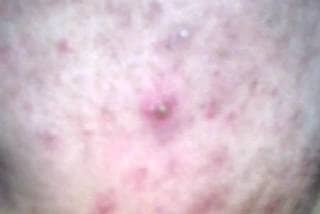Scarlet fever is a bacterial infection that has plagued humanity for centuries, with possible descriptions dating back to ancient Greece. However, it wasn’t until the 16th and 17th centuries that physicians began to distinguish it from other rash-causing illnesses like measles.
Scarlet fever became a leading cause of death in children in the early 20th century, but its severity began to decline. Unfortunately, recent outbreaks of the disease have occurred in various parts of the world, including the UK and Hong Kong. This highlights the need for continued vigilance and research to successfully identify and manage the disease caused by Streptococcus pyogenes.
5 Possible Causes of Scarlet Fever
Like other diseases, Scarlet Fever has its own causes in humans. Here is what is known to medicine:
- Strep Throat Infection: Scarlet fever is mostly caused by a bacterial infection of the throat caused by Group A Streptococcus (GAS). This bacteria also causes strep throat.
- Inhalation: This bacterial infection can also spread through respiratory droplets from an infected person’s cough or sneeze. Inhaling such droplets can lead to an infection.
- Skin Infection: Sometimes, a skin infection caused by GAS can also lead to scarlet fever.
- Shared Items: Sharing food utensils, drinking glasses, or even personal items with an infected person can lead to the spread of the bacteria that cause scarlet fever.
- Crowded Places: People in crowded places, such as schools or nursing homes, are at higher risk of contracting scarlet fever as these areas make it easier for the bacteria to spread. Taking preventive measures like washing hands regularly and maintaining good hygiene can help reduce the risk of scarlet fever.
Risk Factors for Scarlet Fever
Certain situations and conditions may provoke or be more susceptible to contracting the disease:
- Age: Scarlet fever is most common in children between the ages of 5 and 15, although anyone can get it.
- Crowd exposure: Scarlet fever thrives in close quarters, so being in crowded areas increases your risk.
- Weakened immune system: Anyone with a compromised immune system, such as those with HIV or cancer, is at higher risk for scarlet fever.
- Poor hygiene: Not washing your hands frequently or properly can increase your risk of contracting scarlet fever.
- Recent streptococcal infection: If you have recently had strep throat or another streptococcal infection, you are at higher risk for scarlet fever.
It is important to remember that anyone can get scarlet fever, but taking preventative measures such as good hygiene, avoiding crowded areas during outbreaks, and seeking medical treatment for strep throat can reduce your risk.
Symptoms
It must be recognized that Scarlet fever has a wide enough range of signs and symptoms to indicate the presence of this disease in a patient. It is not necessary that all of them must be present in a person, but if you find 2 or more symptoms, this is a reason to see a doctor. Here is a list of the main signs of Scarlet fever:
- Red Rash: Scarlet fever is characterized by a distinctive red rash that feels rough to touch and looks like sunburn. It usually starts on the face and neck before spreading to the trunk, arms, and legs. The rash may become more pronounced in the folds of the body, such as armpits and groin.
- High Fever: Scarlet fever often accompanies high fever of 101°F or higher. The fever may be accompanied by chills and body aches.
- Sore Throat: A sore throat is one of the earliest signs of scarlet fever. The throat may be red and swollen, and swallowing may be painful.
- Strawberry Tongue: A characteristic sign of scarlet fever is a strawberry-like appearance of the tongue, caused by enlarged taste buds.
- Swollen Neck Glands: Scarlet fever may cause the lymph nodes in the neck to become tender and enlarged.
- Nausea and Vomiting: Scarlet fever may cause loss of appetite, nausea, and vomiting.
- General Malaise: Scarlet fever may cause general feelings of unwellness, fatigue, and weakness.
- Loss of Appetite: Scarlet fever may cause a decreased appetite, which can lead to weight loss if left untreated.
- Red Lines in the Folds: Another symptom of scarlet fever is the presence of red lines in the creases of the body, such as the armpit or groin. These lines may persist even after the rash has faded.
- Peeling Skin: After the rash has faded, the affected skin may begin to peel, particularly on the hands, feet, and fingers. This is a common occurrence in scarlet fever and should not be a cause for concern.
Complications that require a rapid response
Septic arthritis, meningitis, and necrotizing fasciitis are just some of the potential complications of untreated Streptococcus pyogenes infections.
The spread of the infection is promoted by mucosal transfer of bacteria to others via classrooms and other similar workplace settings.
People with scarlet fever are most commonly spread through direct person-to-person transmission, such as through saliva or nasal secretions from an infected person. In addition, foodborne outbreaks of group A strep have occurred due to improper food handling.
Environmental transmission via surfaces and fomites was historically not thought to occur, but recent outbreaks investigations indicate that it may be possible. To prevent further complications, prompt treatment with an appropriate antibiotic is necessary.
People with scarlet fever should stay home from school, work, or daycare until they have been on appropriate antibiotic therapy for 12-24 hours.
Methods of treatment
When it comes to treating Scarlet Fever, prompt antibiotic treatment is crucial in reducing the severity of the illness and preventing complications.
Penicillin or amoxicillin is generally the antibiotic of choice to treat Scarlet Fever. Patients who are allergic to penicillin can be treated with first-generation cephalosporin, clindamycin, azithromycin, or clarithromycin.
Patients should take the antibiotic for the full course, as directed by their health care provider to ensure that the infection is fully treated.
Over-the-counter pain relievers, such as ibuprofen or acetaminophen can also be used to control fever and minimize throat pain.
Keeping a sore throat lubricated and moist, getting enough rest, and staying hydrated can help ease symptoms.
Additionally, patients with Scarlet Fever should avoid spicy or acidic foods and fumes from substances that can irritate the throat and lungs.
How to reduce your risk of Scarlet Fever
To reduce your risk of Scarlet Fever, it’s important to practice good hygiene. Wash your hands frequently with soap and water, and avoid touching your face, mouth, or nose with unwashed hands. It’s also essential to avoid close contact with people who are ill, particularly those with strep throat or Scarlet Fever. If you do come into contact with someone who is sick, avoid sharing utensils or cups with them.
Additionally, it’s crucial to teach children to cover their mouth and nose when coughing or sneezing, to use tissues when blowing their nose, and to dispose of used tissues properly. If you or your child develop symptoms like a sore throat, fever, or rash, it’s important to seek medical attention promptly.
With early diagnosis and treatment, Scarlet Fever can be effectively managed, and complications can be prevented.
About the Author
Reyus Mammadli is the author of this health blog since 2008. With a background in medical and biotechnical devices, he has over 15 years of experience working with medical literature and expert guidelines from WHO, CDC, Mayo Clinic, and others. His goal is to present clear, accurate health information for everyday readers — not as a substitute for medical advice.







